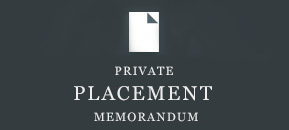Rule 506 of Regulation D is popular way to raise equity or debt capital. Rule 506 allows issuers to raise an unlimited amount of capital. But the issuer must satisfy various rules such as:
• The issuer can raise an unlimited amount of capital;
• The issuer does not use general solicitation or advertising to market the securities;
• The sale of the issuer’s securities can be to an unlimited number of accredited investors and select few other purchasers. Unlike Rule 505 of Regulation D, all non-accredited investors, either alone or with a purchaser representative, must be “sophisticated”. This means that they must have “sufficient” knowledge and “experience” in financial and business matters to make them capable of evaluating the merits and risks of the prospective investment;
• The issuer, i.e. the seller of the securities, must be available to answer questions by prospective purchasers;
• Financial statement requirements as for Rule 505; and
• Purchasers receive restricted securities, which may not be freely traded in the secondary market after the offering.
• And more.
